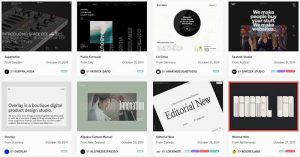The Psychology Of Colors
We’ve all heard that the color you paint a room can affect your mood. True, but this mood alteration is quite transient, so it may not be very beneficial over time. But color can be a great tool for the 20 seconds or so your contacts spend looking at your email.
The Color Theory breaks up the color spectrum into “warm” and “cold” colors, and each type elicits certain psychological responses. The warmer colors are thought to stimulate the viewer, while the cooler end of the spectrum relaxes. Research suggests that much of a consumer’s appraisal of a product (62-90%) comes down to color. So how can you use the psychology of colors to boost your email marketing efforts?
Color Association
Color can have different associations across cultures, so it’s best to research your target audience, but here are some guidelines for marketing in the U.S.
- Red: Energetic (may increase heart rate)
- Orange: Aggressive (may incite a call to action)
- Blue: Trustworthiness (suggests security)
- Green: Relaxing (also suggests wealth)
- Yellow: Optimistic and youthful
- Pink: Romantic and feminine
- Black: Powerful and slick (often used for luxury products)
- Purple: Soothing and calming
Color Popularity
Contrary to the blue/pink stereotype of gender color association, KISSmetrics reports that blue is the favorite color for both men (57%) and women (35%). This is very handy info if you’re unsure which color to use: blue seems to be the safest bet. Blue is also a favorite with businesses like banks, as it suggests trust and security.
Whatever color you decide to use, less is more. Using your primary color in your banner and some headings will help leave the impression you want without overwhelming your readers with too much color. The colors you use in your emails can help increase your brand recognition significantly, so it’s best to do some quick testing and then stick with that color scheme. Your colors become powerfully associated with you and your brand!
How To Use Color For A “Call To Action” In Your Emails
If you want readers to click a specific link in your newsletter, try making the link red. One study found that a red link drew 52% more links than a blue link. Red is the most powerful color in the color spectrum, and it may even elicit a physical response from the body. It can increase the heart rate and cause a short-lived increase in clicking speed and action. Check this out!
Balance here is very important though — it’s best not to make the link too large, bright, and flashing, as it may cause your newsletters to get flagged as spam. Overuse of bright color can also fatigue contacts, causing you to lose your “call to action” influence.
The Psychology of Images
It’s thought that 80% of people who open your emails are only scanning rather than properly reading them. Images can help trigger the emotional response you want from people. A great way of doing this is by using images of people’s faces.
Images of faces are processed in the “fusiform face” area of the brain, which has been shown to process an emotional response.
Try adding an image of customers enjoying your products or services. Seeing a smiling face often puts people in a better mood, and the same goes for images. It’s a great way to associate your brand with happiness! And if you’d like to make a more real connection with your contacts, try adding an image of yourself or your beaming team when signing off.
Digital & Social Articles on Business 2 Community
(503)







